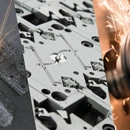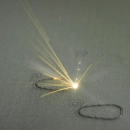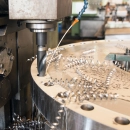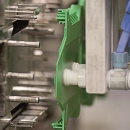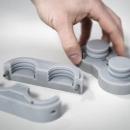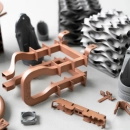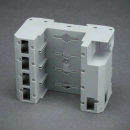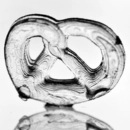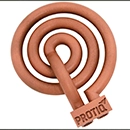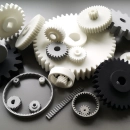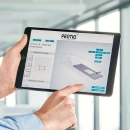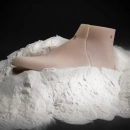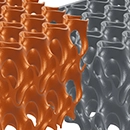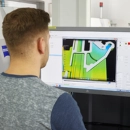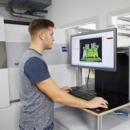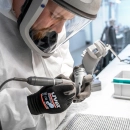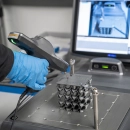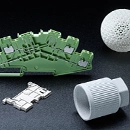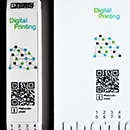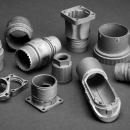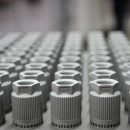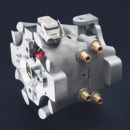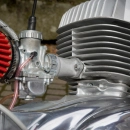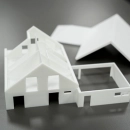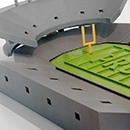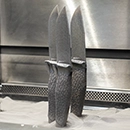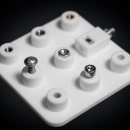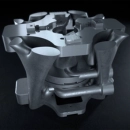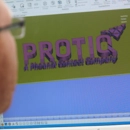Prototyping
Prototypes for the successful iteration process
An important step in a development process is the production of a prototype in order to gain an impression of the look, feel and functionality of the respective component. Any weaknesses can also be identified in this way and corrected at an early stage. Time is an essential factor here. Rapid product development can determine the success or failure of a market launch.

Prototyping in additive manufacturing
Traditionally, the production of samples and prototypes is subject to a high planning and production effort, as manufacturing cannot always be automated and often requires subsequent adjustments. With the help of additive manufacturing, the planning and production phases for prototypes can be significantly shortened.
3D data for prototyping
The creation of 3D data already gives designers an early visual impression of the model to be produced. Powerful CAD programs can simulate the function of the component and provide information on whether the design is feasible. Adjustments and corrections can be made to a 3D CAD file much more quickly and easily than to the finished object.
3D scanning and reverse engineering of prototypes
Your prototype is already created? Using 3D scanning and reverse engineering, we create 3D data of your finished object for further machining and future production.
Request an offer now

Advantages of prototyping with 3D printing
Compared to the classic production method, additive manufacturing of prototypes is a reasonable form of manufacturing that offers numerous advantages:
- Additive manufacturing requires a minimum amount of material.
- Corrections to the 3D file can be transferred directly to the component to be manufactured.
- Prototypes are produced within a few days, saving valuable development time.
- No expensive or complex tools are required.
Functional prototypes, samples and serial parts made of plastics
In additive manufacturing using selective laser sintering, mechanically resilient components are produced from technical plastics. Typical objects in this area are, for example, housing parts and devices, which can even have functional elements such as film hinges and latching hooks.
Lightweight structures by selective laser melting
Components for industry have to meet ever more diverse requirements while becoming increasingly smaller and lighter wherever possible. This results in geometrically complex structures that feature honeycombs, struts and related structural support geometries. In addition, the complexity of a component increases due to the integration of additional functions, such as cooling channels close to the contour or a stress-optimized, organic design.
Additive manufacturing by means of selective laser melting allows these components to be made from innovative lightweight metals, while at the same time offering very good mechanical properties.
Iterative design and user feedback
The iterative design process is an essential part of prototyping, which aims to achieve continuous improvements through repeated testing and adjustments. This approach allows early and regular feedback to be collected from users and stakeholders to refine the design and ensure that the prototype meets requirements and expectations.
Steps of the iterative design process:
Creating the first prototype: Start with an initial design or model that represents the basic functions and features of the final product. This prototype does not have to be perfect, but should serve as a starting point for further improvements.
Test and collect feedback: Conduct tests with the prototype and collect feedback. Be sure to collect both qualitative and quantitative data to get a comprehensive picture of the prototype's strengths and weaknesses.
Analyze and adjust: Analyze the feedback collected and identify areas that need improvement. Adjust the design-in accordingly to fix the identified issues and increase usability.
Repeat the process: Create a new version of the prototype based on the adjustments made and repeat the testing and feedback process. This cycle is repeated as often as necessary until the prototype meets the desired requirements.
Advantages of the iterative design process:
Early error detection: Regular tests and feedback allow potential problems to be identified and rectified at an early stage before they become major challenges.
User-centered design: The continuous involvement of users ensures that the prototype is tailored to the actual needs and expectations of the target group.
Flexibility and adaptability: The iterative process makes it possible to react flexibly to changes and new findings, resulting in a better end product.
Cost and time efficiency: By improving the prototype step by step, unnecessary costs and delays that could result from major design errors can be avoided.
Overall, the iterative design process helps to continuously improve the prototype and ultimately create a product that meets the requirements and expectations of users. By regularly obtaining feedback and adapting the design-in, it is possible to ensure that the development process is efficient and targeted.
Virtual prototyping and simulations
Virtual prototypes and simulations are powerful tools in modern prototyping that allow digital models of a product to be created and tested before physical prototypes are built. By using CAD (computer-aided design) software and advanced simulation programs, engineers and designers can analyze various aspects of a product, such as structure, functionality and ergonomics, in detail.
This technology offers numerous advantages, including the reduction of development time and costs, as potential design errors can be identified and rectified at an early stage. In addition, virtual prototypes enable rapid iteration and adaptation of the design-in based on simulation results and user feedback. This leads to greater efficiency in the development process and helps to ensure that the end product better meets the requirements and expectations of users.
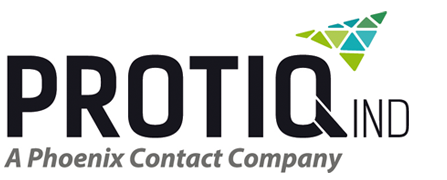


 Deutsch
Deutsch English
English